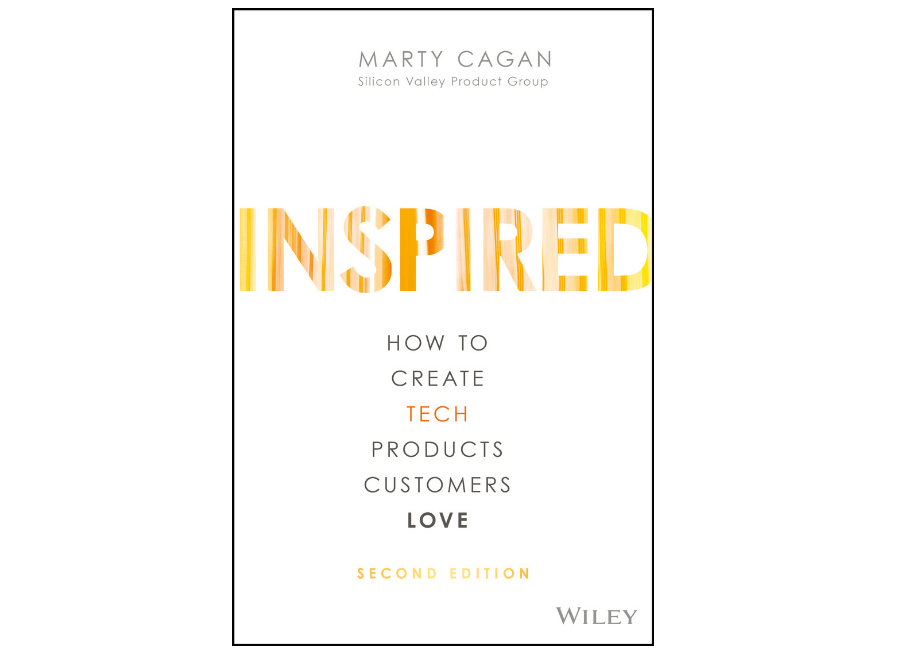Ever wanted to know the secrets to successful product management? Especially why technology products like Netflix, Amazon and Google do so well and have so much love from customers?
It’s something that Marty Cagan, author and founder of Silicon Valley Product Group, set out to answer in his book Inspired: How to Create Tech Products Customers Love.
The thought leader for technology product management drew from his own experiences working on product teams at eBay, Netscape and Hewlett-Packard, amongst others during an illustrious career. And in the book, Marty also delves deep into case studies that illustrate just how important the product manager was to the creation of some highly successful digital products.
As the second edition of the highly popular Inspired is published, we caught up with Marty to find out more.
Inspired is about how the best tech companies create products that earn the love of billions of people around the world (e.g. Amazon, Netflix, Google) and the tremendous difference between how they do it and how the vast majority of technology companies do it. It’s a big question but, in broad strokes, how do they do it so well and others don’t?
“It takes me 400 pages to answer that question in the book, but in broad strokes, I’d say they do three important things differently. First, they tackle product risks up front, before they start writing code; second, they define solutions collaboratively as a give and take between product, design and engineering, rather than sequentially where requirements are passed from product managers to product designers to engineers; and third, they define success not as shipping features but in solving problems – business results.”
Strong tech product companies know that they need to ensure consistent product innovation. And many large enterprise companies are too invested in protecting a product that was successful years ago. Are there any examples of the latter that you think really bring this home?
“There are unfortunately countless examples of large companies that don’t consistently innovate and they either have already been disrupted, or are in the process. Just look at most of the established players in the publishing industry, in the retail industry, in the advertising industry, in the automotive industry, and in the financial services industry, to name just a few.”
The first edition of Inspired was hugely successful when it was published in 2008. When revisiting the book for a second edition, you thought you’d only need to modify 10-20 per cent of the content but realised it needed a complete rewrite. Why?
“For two reasons. First, when I wrote the first edition, I was trying to convince people to move to Agile methods and employ what we now refer to as Lean Startup techniques and today most teams have done this for several years; and second, I have much better ways of explaining the techniques today.”
You quote in the book the famous Silicon Valley venture capitalist who says of the product team, “We need teams of missionaries, not teams of mercenaries”. Why is this important, in your opinion?
“Because great results come from great product teams. And one of the hallmarks of great product teams is that they are teams of missionaries. Every member of the team understands their purpose and the product vision and is passionate about solving the problems assigned to them in ways that their users and customers love, yet work for their business.”
You had a lightbulb moment when working as a software engineer on a high profile product at Hewlett Packard in the 1980s – and it’s a real lesson for product teams. Can you explain that moment?
“I learned the same lesson that countless product and design people have learned. That is, it doesn’t matter how great your engineers are, if you don’t give them something worth building. Product and Design, working with Engineering, are responsible for defining a winning product.”
You write that a product manager needs to be amongst the strongest talent in a company and that it’s a tremendously difficult job with some very challenging responsibilities. What kind of skills do you think it takes to be a successful product manager?
“I define the core ingredients as smart, creative and persistent. By smart, I mean using new technologies to reach new audiences or enable new business models. By creative, I mean thinking outside the normal product box of features to solve business problems. And persistent – as in pushing companies way beyond their comfort zone with compelling evidence, constant communication and building bridges across functions in the face of stubborn resistance.”
You talk about what happens when some of the product team are brought into the process too late to really get full value from them, including UX designers and software engineering/development. What are some of the key things that are affected when this happens?
“If the product manager does not include designers and engineers from the very beginning, then you won’t have shared learning, and you likely won’t have a team of missionaries. At that point, the designer and engineers are more like mercenaries.”
User research is vital for product discovery. You say the key to tapping into the value of user research is that any learning must be shared learning. Basically the product team needs to witness user research insights first hand rather than reading a report after the fact. Why is this important, do you think?
“My belief is that user research is most often extremely valuable, yet usually wasted. It’s wasted in the sense that it is not acted on. This is because the product team was not there to witness the issues first hand.”
Do you think UX-ers make good product managers? What do they need to watch out for when they jump into the product manager role?
“I love it when strong product designers decide they want to learn the product role, and I have encouraged and coached many through that move. However, I’ll also admit that many designers end up telling me they don’t want the stress and responsibility that come along with the product role. That’s probably the biggest reason otherwise ideal candidates don’t make the switch.”
Product managers need people skills to bring projects and teams together. You use a few real life examples in the book to show this including Jane Manning of Google who was product manager for the launch of Google Adwords in 2000. What was it about her experience that shows this people managing skill?
“It is not unusual to encounter stubborn resistance from people in your organisation when trying to push through major new products. In Jane’s case, she had very significant (and understandable) resistance from both engineering and sales. Jane had to use her people skills to elicit the underlying concerns and then convince people to work with her to come up with solutions that address these concerns.”
Inspired – How To Create Tech Products Customers Love is published by Wiley.
Interested in product management?
Check out Why product managers need to know UX.






